

Section

Back
Shatavari vs. Maca vs. Ashwagandha: A Comparative Guide
02/14/2024 | Written by Kate Tant
Live Vibrantly
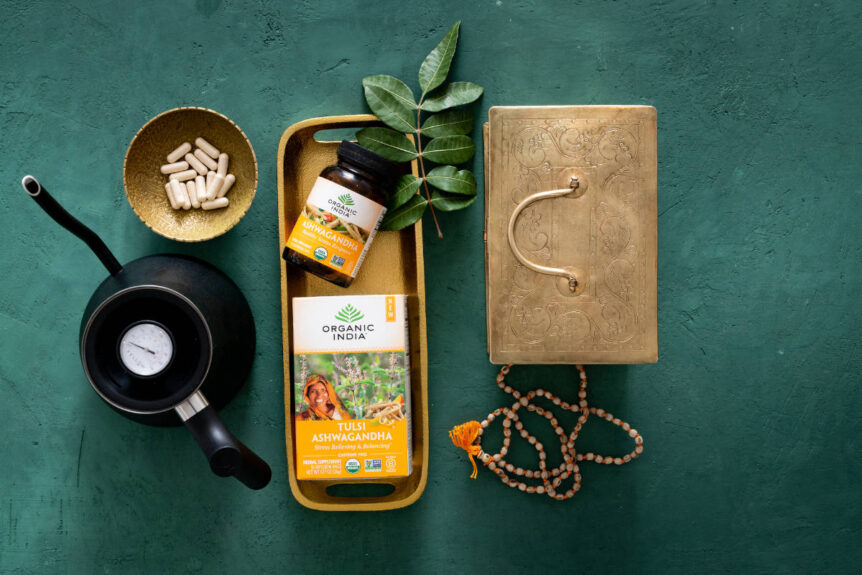
In ancient healing practices, three robust herbs — Shatavari vs. Maca vs. Ashwagandha — stand out for their unique health benefits. While Maca originated in the Peruvian Andes mountains, Shatavari and Ashwagandha are found in India and Africa. These three incredible herbs share similarities in their adaptogenic profile. They also possess distinctive properties, making them the go-to herb for various holistic health modalities. In this guide, we’ll delve into the nuances of each herb to help you uncover the best option for your specific needs.
Shatavari vs. Maca vs. Ashwagandha: Which is Better?
These three natural herbs shatavari vs. maca. ashwagandha are similar in many ways. They are all considered adaptogenic herbs. Yet they are somewhat diverse in their benefits, making comparing how they might support your specific needs challenging. However, understanding each herb’s unique strengths will help you determine which one — or combination — might work best for you.
Maca: The Peruvian Ginseng
Over the last few decades, Maca has grown in popularity for its many health benefits. It is rich in vitamins, minerals, and fiber, which support hormonal balance and act as a mood enhancer. The Maca root was traditionally used by the Andean people both for food and for its medicinal properties. Its potential as an adaptogen is promising, leading to its popularity in the modern wellness world.
Maca is often touted for improving energy and libido in both men and women. It may also preserve cognitive function, has shown promise with digestive and respiratory issues, and supports a healthy inflammatory response.
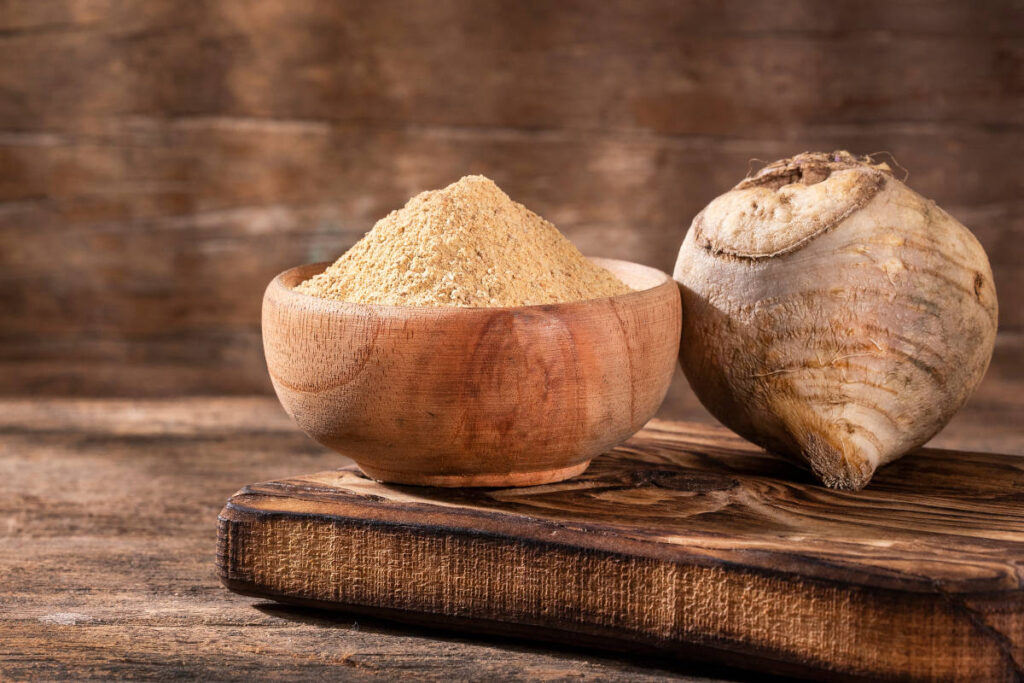
Shatavari: The Queen of Herbs
In Ayurveda, Shatavari is revered as the “Queen of Herbs” for its ability to support already healthy fertility and vitality. It’s become widely used as a tonic for women, supporting female reproductive health from period to menopause. In that regard, it is similar to Maca, as both herbs encourage the proper balance of hormones.
Shatavari has powerful antioxidant properties which enhance immune function and support a healthy inflammatory response. As an adaptogen, it helps relieve the effects of stress and aids in sustaining energy levels.
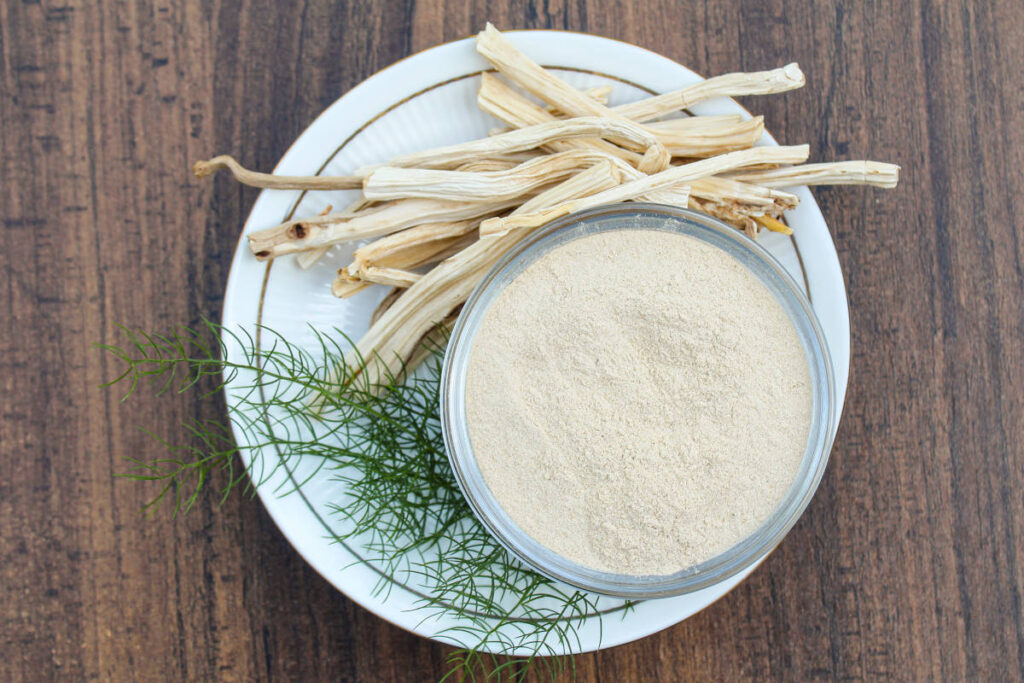
Ashwagandha: The Rejuvenator
Ashwagandha is an evergreen shrub found in parts of India and Africa. In traditional Ayurvedic medicine, it is known as a Rasayana or rejuvenator. It improves cognitive function, enhances energy levels, and facilitates sleep.
Like Maca and Shatavari, Ashwagandha is celebrated for its adaptogenic properties, helping the body manage stress and feelings of worry and apprehension. It is a regenerative tonic that supports the nervous system, making it a popular supplement for many dealing with the pressures of modern life.
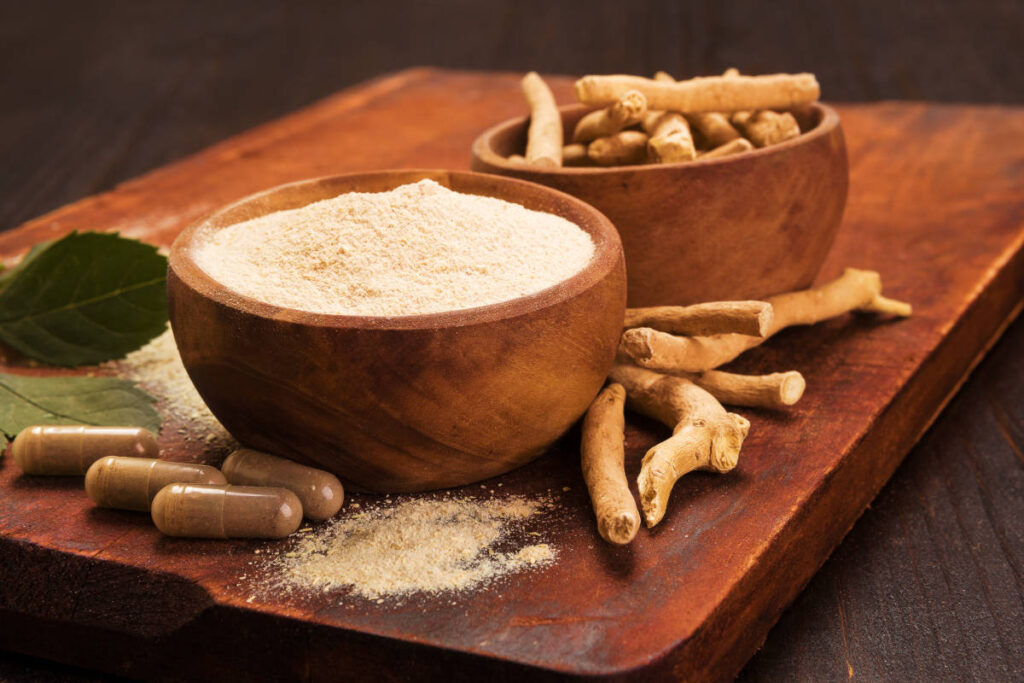
Can You Take Shatavari and Maca Together?
Shatavari and Maca, taken together, create a matchless synergy of nourishment and support for female hormones. Regarded as two of the best adaptogens for balancing female hormones, Shatavari and Maca boost vitality and reproductive health. The mood- and energy-enhancing benefits of Maca complement Shatavari’s stress-easing properties.
Shatavari supports hormonal balance through all phases of a woman’s reproductive cycle. That’s why it’s a key ingredient in our Essential Female Hormonal Balance supplement. It also supports regular menstrual cycles, a healthy libido, and overall reproductive wellness. This multi-herbal supplement holistically harnesses the vital energy for mind-body-spirit invigoration.
Maca is a natural therapy for improving mood and libido while supporting fertility and regulating estrogen levels. It may help reduce the severity of menopausal symptoms, making it an excellent adaptogen for female health and wellness. As a bonus, Maca shows potential in improving memory and learning due to its high antioxidant content.
Can You Take Ashwagandha and Shatavari Together?
When taken together, Ashwagandha and Shatavari make a robust combination of resiliency and vitality. They both support a healthy response to stress and promote a robust immune system.
Ashwagandha has demonstrated outstanding immune-stimulating properties, helping to ward off illness. And Shatavari works to support the body’s natural inflammatory response. Taking these two herbs together only enhances their effectiveness.
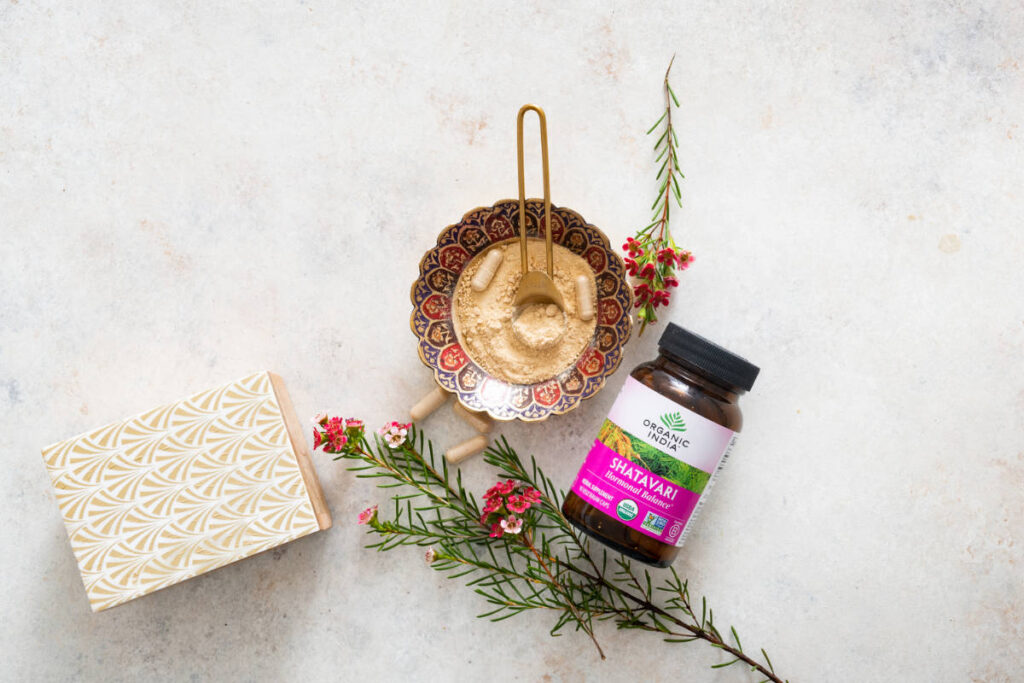
Can You Take Ashwagandha and Maca Together?
Adaptogenic herbs have been used in traditional medicine for thousands of years. They act as a natural tonic to support the body’s systems and influence stress management. Ashwagandha and Maca may be one of the best combinations of adaptogenic herbs for female health.
Both Ashwagandha and Maca support the hormones responsible for fertility. Research shows Ashwagandha may support sperm health and aid in maintaining testosterone levels. Maca may enhance libido and perceived sexual performance. When taken together, these herbs are a potent duo.
Synergistic Benefits of Ashwagandha and Shatavari
In this modern world, stress is inevitable. Fortunately, we have the wisdom of ancient Ayurvedic practices that provide knowledge of the best adaptogenic herbs for stress relief. These adaptogenic herbs help you adapt to outside stress by reducing cortisol levels.
Ashwagandha and Shatavari are particularly supportive of stress relief. Shatavari has been shown to increase DHEA, a hormone that counteracts the adverse effects of cortisol. Ashwagandha supports the body’s natural stress response by lowering cortisol levels. While each herb has different fundamental benefits, taking them together is safe and provides a holistic approach to overall wellness.
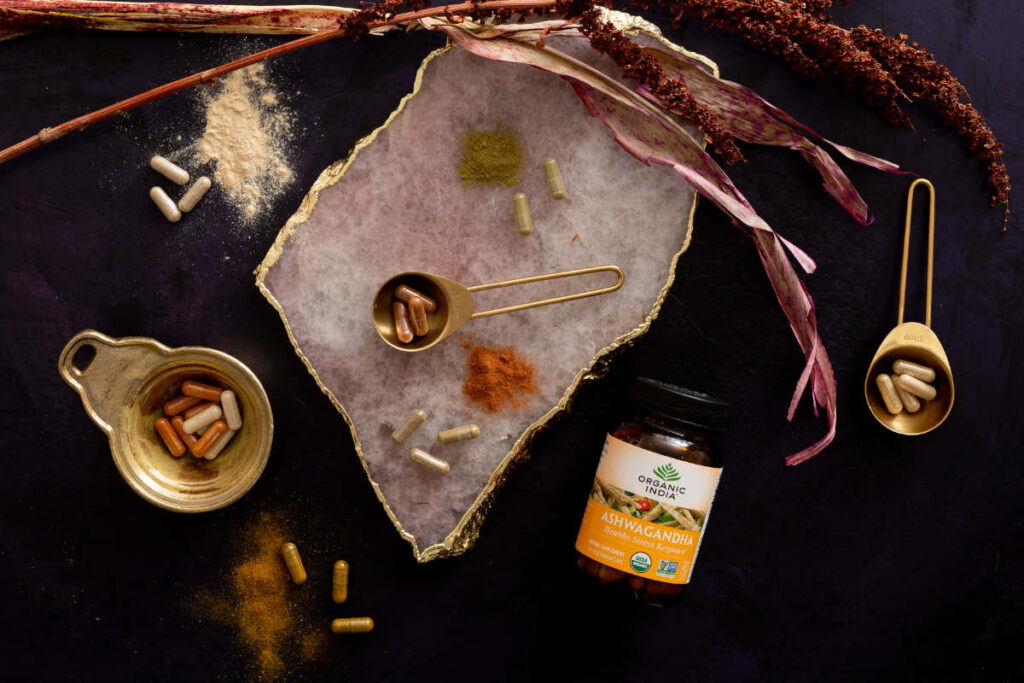
Shatavari vs. Maca for Women
Shatavari and Maca offer significant wellness benefits for women, but Shatavari takes center stage for its renowned ability to support the female reproductive system. It is considered to be a phytoestrogen — a compound that may support already healthy estrogen levels in the body. Shatavari ushers in support for female hormones while promoting a peaceful and comfortable menstrual cycle. But it doesn’t stop there. Shatavari has a nourishing effect, helping to soothe vaginal dryness and support the reproductive system during a woman’s transition from perimenopause to menopause.
While Shatavari is hormone balancing, Maca plays a supporting role by propping up energy levels and improving moods with its robust flavonoid profile. This vitality powerhouse may also help relieve menopause symptoms by enhancing energy levels and supporting a healthy stress response.
Maca provides reproductive support through all phases of a woman’s reproductive journey. It may act as a hormone modulator, directly influencing the hypothalamus–pituitary-ovarian axis — the pathway that orchestrates the release of sex hormones. Its support of this pathway helps the body adapt to environmental triggers and supports fertility and sex drive.
In addition to reproductive support, Maca offers several other benefits, including digestive support, mood and energy enhancement, and the preservation of cognitive function. Maca is available in powder, capsule, and liquid extract form. The best practice is to start with a lower dose and adjust as needed.
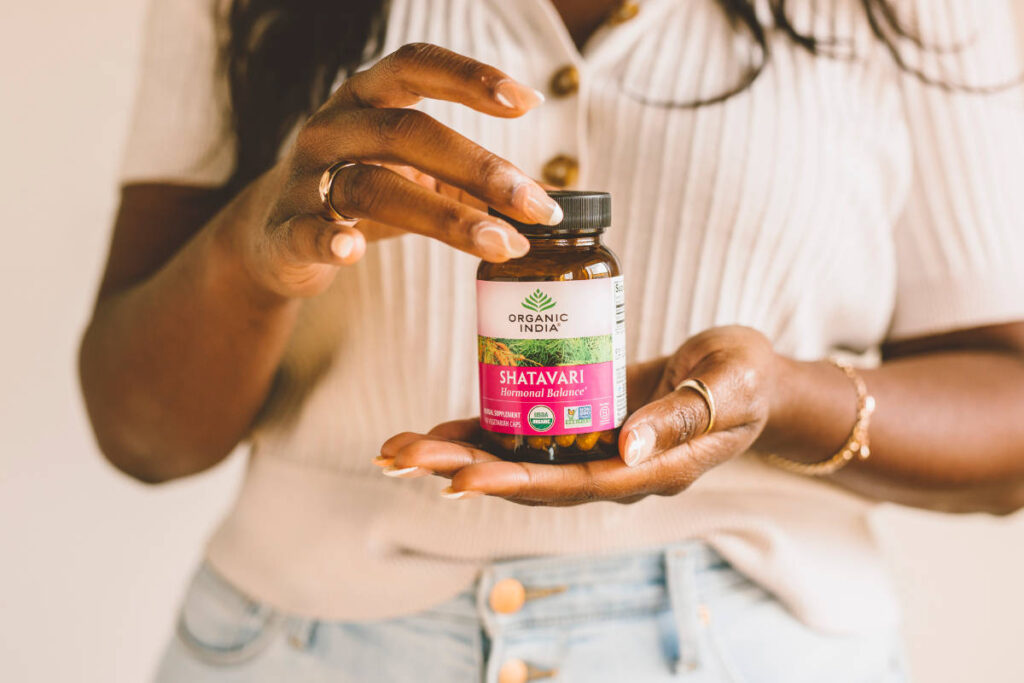
Ashwagandha vs. Maca for Men
Both Ashwagandha and Maca are powerful adaptogenic herbs offering numerous health benefits. Their distinctive properties as herbal remedies have withstood the test of time for men and women. Ashwagandha and Maca provide many of the same benefits for men as they do for women regarding reproductive health and resilience to stress.
Researchers found that Ashwagandha improves stress-induced low libido, and some studies indicate it may enhance testosterone levels and support healthy sex drive in men. Ashwagandha reinforces hormonal and reproductive function by promoting vitality and healthy circulation.
Maca may also have a positive effect on men’s stress-related low libido or low sexual drive as it can boost energy levels and increase stamina. Its mood-enhancing properties help guard against stress and worry.
Men looking for hormonal balance and stress management may prefer to start with Ashwagandha. But, if energy and libido are a concern, Maca is the ideal adaptogen. The good news is that these two herbs can work synergistically to provide a holistic solution. Taking Ashwagandha and Maca together is safe and may be beneficial in meeting your individual wellness needs.
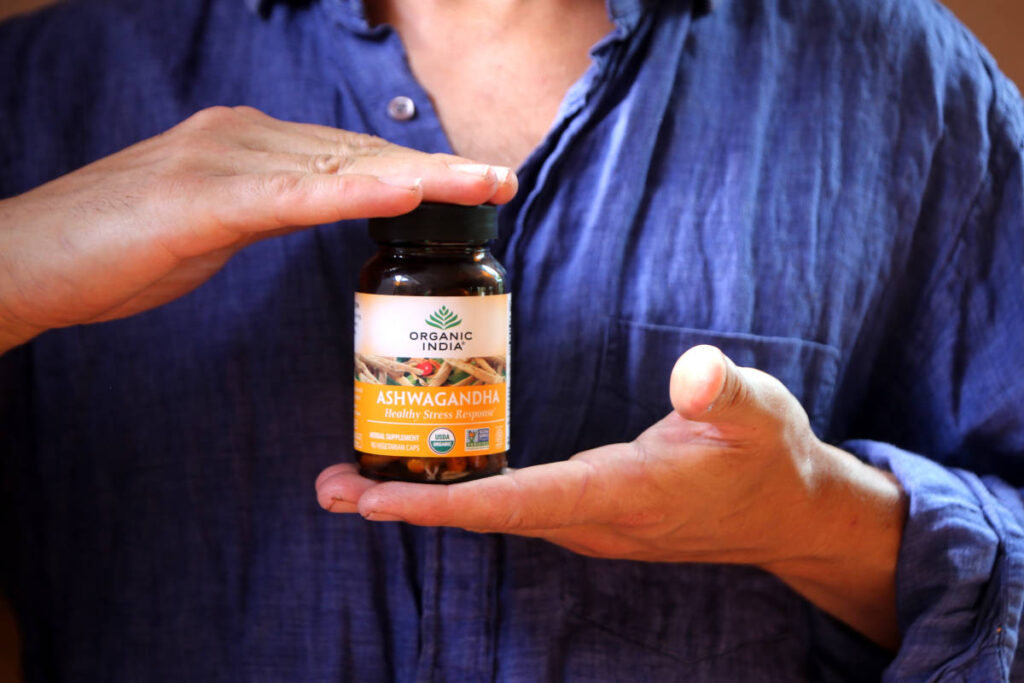
What Is the Downside to Maca?
While maca is a powerful rejuvenator and energizer, it may have harmful side effects for some if not used properly. Taking too much at once may make you feel jittery. If that happens, simply reduce your dosage. Other side effects may include moodiness, trouble sleeping, and digestive distress.
Natural herbs can interfere and interact with drugs and medications. If you take any medication, let your doctor or pharmacist know which natural supplements you include in your daily wellness routine. They’ll tell you about any possible interactions.
As with any supplement, you should source quality supplements from companies committed to providing organically grown herbs to avoid potential contaminants. Organic India USA has earned the coveted B Corp certification, a testament to our desire to meet the highest social and environmental performance standards.
Harnessing The Power of Shatavari vs. Maca vs. Ashwagandha
Shatavari vs. Maca vs. Ashwagandha each offer unique health benefits that support wellness for both men and women. Each herb is strong enough to stand on its own, yet combined, they may provide a more well-rounded approach to smoothing out bothersome symptoms. Whether you’re looking to support your reproductive health, boost energy and libido, or manage stress, these natural herbs offer holistic support.
By understanding each herb’s specific strengths and benefits, you can make informed decisions as you incorporate them into your wellness plan. Our Organic Ashwagandha Root Capsules and Shatavari Hormonal Balance are great places to start if you’re looking for a natural way to support your mind and body.
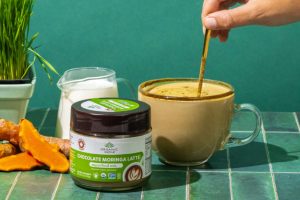
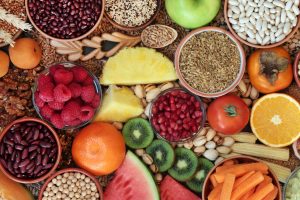
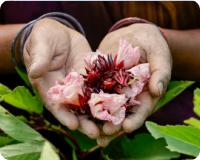

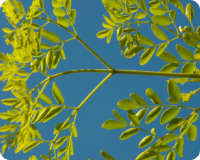

 Kate Tant is a professional health and wellness writer with a strong passion for holistic wellness. Her writing covers topics from Ayurvedic herbs and practices to nontoxic living and intermittent fasting. Her conversational writing style resonates with readers who are looking for help and encouragement when it comes to finding natural solutions to their health.
Kate Tant is a professional health and wellness writer with a strong passion for holistic wellness. Her writing covers topics from Ayurvedic herbs and practices to nontoxic living and intermittent fasting. Her conversational writing style resonates with readers who are looking for help and encouragement when it comes to finding natural solutions to their health.